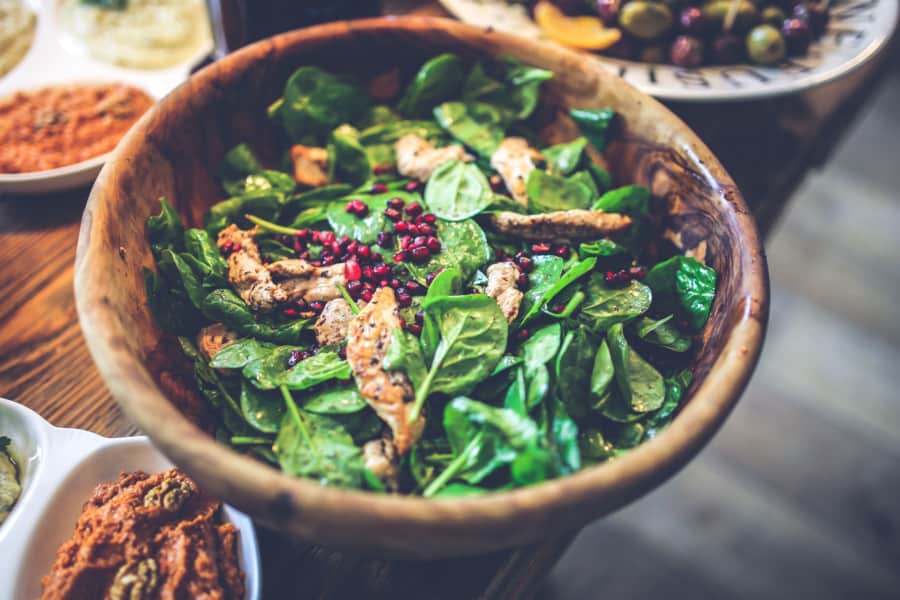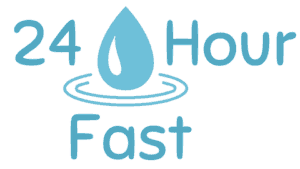You might be planning to do a 24-hour fast in the next future or currently fasting while you are reading this. And you might be wondering what should I eat after fasting for that long? Indeed, eating might seem to be the easiest part here, but there are still a few rules to keep in mind. This is what we are going to cover in this article so that you can lean into your first meal as smoothly as possible.
What is a 24-hour fast?
Fasting overview
Fasting and intermittent fasting, in particular, has seen its popularity grown a lot in the past few years. There is nothing new about it though, you simply don’t eat for a certain period of time. And you refeed during a restricted time frame. There are several methods for practicing intermittent fasting, we won’t go into the details here but you can learn more about the most popular ways to do intermittent fasting here.
How to do a 24-hour fast?
By definition, it’s pretty simple: don’t eat for 24 hours. That’s it. Some people do a 24-hour fast once, to experiment and see how they feel afterward. Even if a 24-hour fast is not technically considered a prolonged fast and generally safe, we recommend proceeding with caution and testing with smaller periods of fasting first, from 12 to 16 hours.
Other people incorporate this way of fasting into their weekly schedule and fast for 24 hours once a week, others twice a week or even every other day. Each method has its own advantages, but at the end of the
The video below highlights the experiment of alternate-day fasting that the Goal guys undertook as a 30-day challenge:
24-hour fast benefits
Regardless of the exact schedule you decide to follow for your 24-hour fast, there are overall health benefits to intermittent fasting that are quite significant.
While you are fasting and the longer it lasts (within reasonable limits obviously), your body has more time to put towards healing. More resources go towards hormones optimization and tissue repair since some of the resources are freed up by a pause in the digestion process.
Among other benefits, fasting can improve your immune system, your brain function, promote anti-aging process or improve insulin sensitivity. It can also improve hunger management by regulating levels of ghrelin, the “hunger hormone” responsible for stimulating your appetite.
The best food to eat after fasting
So now that we know that fasting can have positive impacts on our body, we need to make sure that we are refeeding safely.

Starting with a beverage
First, make sure you are well hydrated already. If refeeding with solid food right away seems too much, a more progressive approach consists of starting with liquid, waiting for a little while, 30 min to an hour, and eating your first meal only then. This may help your digestive system ease back into eating.
It’s not absolutely necessary though and if you feel ready for solid food, feel free to skip that next
In terms of liquid to start off with, there are plenty of options, like freshly-made vegetables and fruit juices, smoothies, bone broths or vegetable soups. Those are great as they are nutrient-dense but don’t overload your digestive system. Try to stay away from sugar-heavy drinks.
What to eat right after fasting
Once you feel ready for solid foods, whether you had some nutritious beverage or not first, it’s important to understand that not overeating during that first meal is key. Eating a small meal first after a fast is advised.
Here are some great food options to break your fast, that won’t strain your digestive system:
- Raw fruits
- Dried fruits like dates, dried apricots or raisins
- Raw vegetables like leafy green lettuces, spinach, kale
- Cooked vegetables
- Healthy fats like avocado, grass-fed butter, ghee, olive oil, coconut oil
- Lean protein
Focusing on nutritious whole foods is best, especially those who contain protein, healthy fats and fiber.
I usually like to break my fast with a big glass of water where I mix a tablespoon of psyllium husk. I found that it helps my digestion later on. But it may increase bloating in some people, so the best is to try and see if
After the water, I eat a date, followed by a salad containing tomato, cucumber, avocado, leafy greens, parsley and a bit of olive oil. I also add some chicken or turkey to my salad but keep the meat portion small.
Also, don’t forget to take your time to enjoy that first meal and chew thoroughly. Practise

Food to consider for a later meal
The foods listed above are typically the easiest ones to digest after a fast and should be preferred against the ones that follow. Indeed those food tend to be more problematic:
- Nuts and nut butters
- Seeds and seed butters
- Eggs
- Dairy products
- Whole grains and beans
- Raw cruciferous vegetables
- Alcohol
It’s better to consume them in a later meal. Typically, within 5 or 6 hours of ending your fast, you should be able to consume those foods without any issue.
Preparation is key
When it comes to breaking a fast, it’s important to be prepared. Ideally have your meal planned and cooked ahead so you just have very minimal cooking to do before eating.
That will limit the temptations to grab a packaged or processed food when you feel hungry. You really want to eat some nutrient-dense whole foods and having it prepared in advance will make your life easier when it’s time to break your fast.
Generally speaking, planning your meals ahead for the week, as well as your fasting periods, is ideal. Taking some time to meal prep during the weekend or any day that suits you can go a long way.
You don’t need to spend a full day in the kitchen. I usually spend 2 to 3 hours on Sundays to cook two or three complete dishes that will make 8 to 12 servings for the week.
It comes handy when at the end of a word day, I feel tired and hungry and the last thing I want to do is spend another hour in the kitchen. Temptations to eat processed food becomes high at that time. Having that healthy meal waiting for me in the fridge is definitely a huge plus then.
If you want great recipes ideas with an optimized meal preparation process, I recommend checking out Cassy Joy Garcia cookbook: Cook Once, Eat All Week.
One last thing to be aware of when it comes to eating after a fast is a condition called the refeeding syndrome. Let’s see in more details what this is about.
The refeeding syndrome
What is it?
Refeeding syndrome is a condition that can happen after reintroduction of food among people who are undernourished, starved or metabolically stressed. During the refeeding period, insulin secretion is reactivated in response to the newly elevated blood sugar. This process requires ions like phosphate, potassium or magnesium. But because the body is already in a depleted state, this becomes an issue as too few ions are left in the blood.
Risks associated with the refeeding syndrome
Symptoms that can occur with referring syndrome are fatigue, confusion, difficulty to breath, seizures, heart arrhythmiamias, heart failure or death. This can typically appear 2 to 4 days after refeeding.
24-hour fast are typically too short to put the body into such a depleted state. That doesn’t mean you shouldn’t be aware of this syndrome and exercise caution.
There are a few ways to decrease the risk of developing refeeding issues when breaking your fast:
- As mentioned above, prefer low-carb, high-fat meals rather than high-carb meals right after breaking your fast.
- Focus on hydration during your fast.
- Keep any fast longer than 3 days under medical supervision. And it’s always better to talk to your medical practitioner before starting any fast.
Who shouldn’t fast
Fasting for short periods of time is generally considered safe. However, we recommend talking to your medical professional before attempting any significant change in your eating behaviour.
Also, the following population should NOT attempt any fast without medical supervision: people with any medical condition, people with heart disease or diabetes, women who are pregnant or breastfeeding, people with blood sugar regulation issues or non-optimal blood pressure, adolescent and older adults.
The information we provide at 24hourfast.com is not intended to replace a consultation with a qualified medical professional. By interacting with this site, you agree to our disclaimer.
